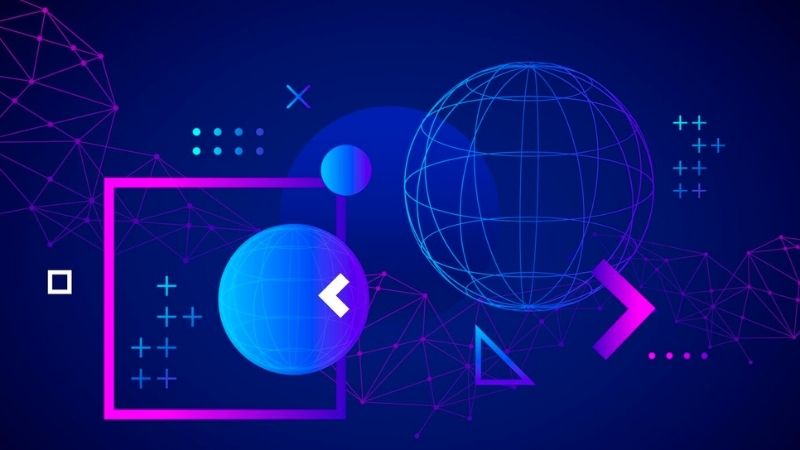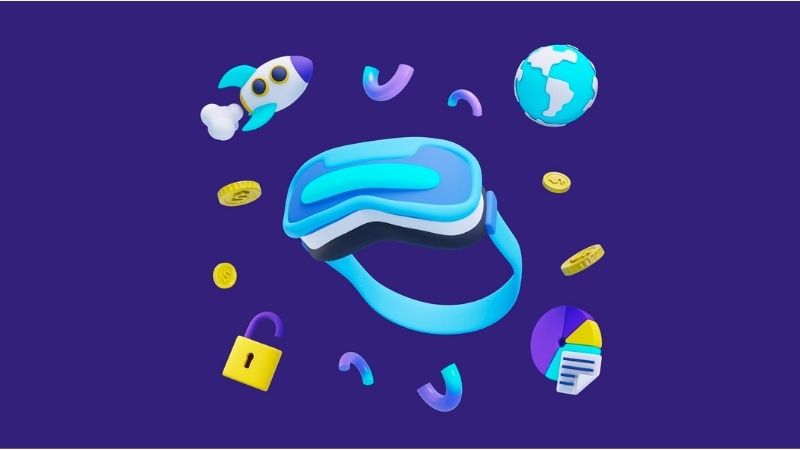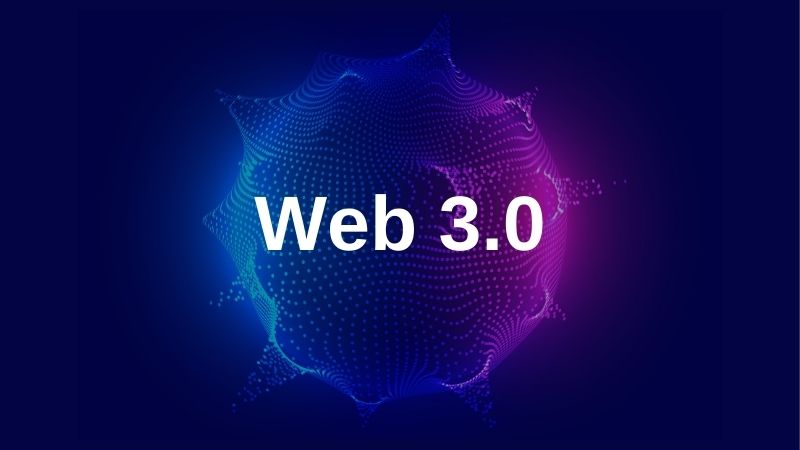If we say that Web 3.0 ushers in a new era on the internet, we think we would not be wrong. Even in the Web 2.0 era we are in now, we are surprised almost every day by what is happening. Web 3 opens a completely different door for us. “What is Web 3.0?” In this content where we will discuss the question, you can find much more information about this term defined as ‘the future of the internet’ . Let’s take a closer look at this world that is directly related to blockchain and cryptocurrencies.
In order to better understand this concept, its previous era, Web 2.0, and the previous era of Web 2.0, the Web, which is the beginning of everything in the internet world. Let’s briefly consider the 1.0 period. You can find out which Web 3.0 coins they are in the following parts of our article.
Let’s Get to Know the Era Before Web 3.0

In the time of Web 1.0 , it was a stagnant period for internet users. For this reason, this concept was called ‘stationary web’ . In the early period of the web, a basic structure was provided for information exchange. At that time, websites were static and users could not interact with them. Users visiting static websites were limited to consuming information. They could not change or contribute to the content. Shopping online was a dream at that time.
When it came to the Web 2.0 era, the process became colorful. Web 2.0 is the next step in the evolution of the internet. In this context, it is introduced as a ‘participatory web’ . In this period, internet users no longer just consume content, but also create, share and interact with it. Interactive and participatory platforms such as social media platforms, blogs, internet encyclopedias called wikis and online collaboration tools emerged in this period.
Web 2.0 is a time when users can personalize their experiences, share their content, and interact with other users. This is an indication that the internet is becoming more dynamic, participatory and community-oriented. Thanks to smartphones that have entered our lives, many actions that users want to perform over the internet can be done through relevant applications without visiting websites. We are currently still in the Web 2.0 era. Of course, the footsteps of Web 3 have already begun to arrive.
Now that we have given brief information about the evolution of the Internet world, we can talk about the magical world of Web 3.
What does Web 3.0 mean?

Web3 can be seen as a continuation of the traditional internet based on decentralized and crypto technologies . The promise of Web3 is that users will be able to interact and transact directly with anyone in the world, and all while users have full control over their data.
Web 3.0 can be considered the future evolution of the internet . This concept is also referred to as the ‘ decentralized web’ . Among the purposes of Web 3.0; There are expressions that redefine the internet experience, such as users being able to control their data, protecting their privacy, and interacting through decentralized platforms .
At the heart of Web3 are blockchain, IPFS (Interplanetary File System) where anyone can share data with anyone, decentralized applications (DApps), and DIDs (Decentralized Identifiers) that eliminate the need for digital identities to trust a central authority or monopolized services. There are various important technologies, including Each of these technologies offers unique advantages. What they all have in common is; It is the ability to create a more connected, permission-free and privacy-focused internet experience.
The favorites of this new era are distributed ledger technologies such as blockchain technology and innovative tools such as smart contracts. Users can store and control their data on decentralized networks, increasing data security and reducing data censorship.
One of the developments that Web3 points to is the rise of crypto economies . Users can transfer value through cryptocurrencies, manage their digital assets, and participate in decentralized applications . This is a very strong candidate for creating an alternative ecosystem to the now traditional financial systems we have been accustomed to for years.
With the proliferation of smart contracts and decentralized applications, Web 3.0 is expected to deliver a more automated and reliable online experience. This period saw users gain more ownership over the internet and say, “Yes, I am safe.” It can make it possible for people to interact in a way that they can say.
Web 3.0 represents the vision of a more open, free and democratic internet by changing the balance of power of the internet in favor of the user. In this new era, users shape and control the Internet more actively. This provides a more fair and transparent online experience.
What is the Difference Between Web 3.0 and Web 2.0?
While the difference between Web 1 and Web 3 is obvious, the differences between Web 2 and Web 3 are close. To see these differences more clearly, you can take a look at the table below.
| FEATURE | WEB 2.0 | WEB 3.0 |
| Architectural Building | Central control and server based | Decentralized, distributed and blockchain based |
| Data Storage | Stored on central servers | Stored on distributed blockchain networks |
| Data processing | Processed by central servers | Processed by decentralized smart contracts and distributed applications |
| Security | Server-centric security | Security is ensured with cryptography and decentralized authentication systems |
| Data Ownership | Data generally belongs to the platform owner | Data owners are provided with greater control and transparency |
| Interoperability | Usually at low level | At a higher level, data and transaction sharing between different platforms may be possible |
| User experience | Often focuses on the design of platforms | Delivers more personalized, user-centered experiences |
| Abilities | Basic social networks, blogs, video sharing sites | Smart contracts, DeFi, NFT markets, decentralized applications |
| Content and Asset Management | Platforms generally retain control of content and assets | Users have greater control of assets and content, tokenization of digital assets like NFTs is common |
What are the Basic Features of Web3?

Web 3 brings many features. Its basic features are as follows.
- Decentralization: Web 3.0 is based on decentralized or distributed systems. This is a very important feature of it. Users do not have to store and control their data on central networks. They can pay directly to the storage provider. Thus, user data security increases, control of a single organization ends, and censorship decreases.
- Creating Economy: Web 3.0 creates decentralized economies thanks to cryptocurrencies. Users can interact, make payments and transfer value through their digital assets.
- Smart Contracts: Web 3.0 provides the basis for automated and reliable transactions using programmable contracts called smart contracts. This results in a more secure and transparent transaction process compared to traditional contracts.
- Data Privacy and Security: Web 3.0 gives importance to users’ data privacy and security. Decentralized structures and encryption techniques make user data more secure. Thus, problems such as misuse of user data are eliminated.
- Variability and Innovation: Web 3.0 creates an open, innovative and flexible platform for developers. Thus, it allows the development of various applications in different industries and use cases.
- Openness and Traceability: Web 3.0 makes it possible for transactions to be open and traceable. Blockchain technology offers the ability to reliably record and track the history of transactions.
- Community Participation and Governance: Web 3.0 encourages users to participate in the governance of platforms and be involved in decision-making processes. This means a more fair and democratic internet experience.
These features are the key features that distinguish Web 3.0 from the traditional Internet. This new era pave the way for the internet to evolve in a more free, fair and secure environment.

Why is Web3 Important?
The importance of Web3 comes from increasing data security by using decentralized structures, giving users control of data, and encouraging innovation, enabling the internet to develop in a more free, transparent and fair environment.
When the web was first implemented, internet users were satisfied with what was offered to them. This became insufficient after a while, and users wanted to interact on the internet. This request started the Web 2.0 era. Nowadays, internet users want to control their own data rather than just interact. The key to this is hidden in Web3.
Of course, Web 3 is important not only for individual users but also for businesses . Web3 paints a decentralized picture that will create major changes in the way companies do business. Using blockchain technology and smart contracts, Web3 offers enhanced security, increased efficiency, and greater transparency, allowing businesses to interact with both customers and other businesses in a completely new dimension. Web3 has extraordinary potential for all aspects of business, from supply chain management to financial transactions. Businesses that want to future-proof their operations can have this new vision.
What are the Usage Areas of Web 3.0?

Web3 isn’t just about connecting people and information. He is also keen on revolutionizing industries and redefining the way business is done . Considering this, it is not possible to limit the possible usage areas of Web3 to a few examples. Different examples can be given in different fields on this subject. Some of these can be found below.
- Supply Chain Management
Increased transparency and traceability transforms supply chain management. Companies can use blockchain to create records of their product’s journey from production to distribution. This guarantees authenticity and reduces the risk of counterfeit products entering the market.
Example: A blockchain-based system can be implemented to track food products. Thus, products can be monitored in real time, reducing foodborne illnesses and improving overall safety.
- Digital Identity
Managing digital identity is very important in the digital age. Web3 offers a solution by giving individuals control over their online identity and personal data. Users can grant permission to access their data, increasing privacy and security.
Example: Decentralized identity management platforms can be used to allow users to securely manage and share their credentials. Thus, the risk of identity theft can be reduced and verification processes can be facilitated.
- Content Ownership
Web3 ushers in a new era of content ownership through the use of NFTs. Artists, musicians, and creators can tokenize their work. They can earn royalties for every sale or use of content.
Example: The sale of the digital artwork created by Beeple as NFT for 69 million dollars had a great impact around the world. This was a strong attempt to demonstrate the potential to monetize artists’ digitally created content without the need for any intermediaries.
- Decentralized Finance (DeFi)
Thanks to DeFi, financial services can be enjoyed without traditional intermediaries. This is one of the prominent applications of Web3. Anyone with an internet connection can access financial instruments.
Example: Thanks to DeFi protocols, users can borrow and lend crypto assets directly from their wallets without the need for banks, earn returns thanks to systems generally called staking, and carry out all transactions by paying very small fees.
- Metaverse
In the Web3 domain, the metaverse provides users with a virtual world in which they navigate as avatars and engage in a three-dimensional internet experience. Metaverse leverages core Web3 principles, focuses on decentralized management and creator-centricity, and gives users complete control. Although there is still a long way to go in the field of Meteverse, major technology giants are aware of the potential and are taking steps to deliver something at this point.
Example: Roblox, a hugely popular online platform and game creation system, falls within the metaverse. Users can design their own games and experiences in the virtual universe created by Roblox. It can be called a metaverse because it combines various interconnected virtual worlds, each created by different users. These worlds can range from simple games to complex and immersive experiences.
- Blockchain Games
One of the most prominent areas of Web3 is blockchain-based games, where players actually own in-game assets and enable cross-platform item transfers. This area can be considered a strong sign of the future potential of the game concept. Avatars, clothing, vehicles, and more kinds of things are considered NFTs. Players can exchange their NFTs for real currency and transfer them between games.
Example: Axie Infinity can be considered as an example of the real-world application of Web3 in gaming. The fact that those who play this game win crypto rewards is one of the innovations that Web3 has brought to the internet world.
It is normal to think of Web 3.0 as an abstract concept at first. Thanks to these examples, the use of Web 3.0 in the real world can be understood and viewed from a concrete perspective.
What are the Web 3 Coins Listed on ICRYPEX?
ICRYPEX is an exchange that lists assets across many cryptocurrency categories. One of these categories is Web3, which attracts a lot of attention from the cryptocurrency world. Web 3 coins listed on ICRYPEX are as follows. Many more Web 3.0 coins will be added to this list with listings in the future.
Chainlink (LINK)
Chainlink supports the widespread deployment of smart contracts by providing a connection between blockchain platforms and real-world data. This offers potential for usability in a variety of industries, from financial applications to the insurance industry.
You can buy and sell LINK at any time via ICRYPEX and review the price change from past to present.
Polkadot (DOT)
Polkadot is a cryptocurrency project designed to facilitate the integration of blockchain projects with each other. By connecting different blockchains, it makes the transfer of data and assets between these projects interactive.
You can buy or sell DOT at any time via ICRYPEX and review the price change from past to present.
Injective (INJ)
Injective is a cryptocurrency protocol developed specifically to support decentralized financial applications (DeFi). It provides an infrastructure to expand the DeFi ecosystem by offering users the opportunity to trade on decentralized exchanges and derivative markets.
You can buy or sell INJ at any time via ICRYPEX and review the price change from past to present.
Filecoin (FIL)
Filecoin is a distributed file storage network and cryptocurrency project. It offers a decentralized file storage solution, allowing users to securely store and share their files. The main goal of Filecoin is to create an infrastructure to store and share data in a more secure, scalable and economical way.
You can buy or sell FIL at any time via ICRYPEX and review the price change from past to present.
Render (RNDR)
Render is a platform that brings together renderers in the field of computer graphics, animation, filmmaking, game development and other visual effects applications with those with high GPU power. While it enables those who want to perform rendering operations to do their operations quickly and at low cost, it also enables the GPU owners who serve them to earn profit.
You can buy or sell RNDR at any time via ICRYPEX and review the price change from past to present.
The Graph (GRT)
The Graph is a protocol that enables indexing of data on Ethereum and other blockchains and accelerates access to this data. It helps developers improve their applications by allowing them to access blockchain data faster and more efficiently.
You can buy or sell GRT at any time via ICRYPEX and review the price change from past to present.
MultiversX (EGLD)
MultiversX supports the development of new applications by providing a scalable, secure and decentralized blockchain network for users, businesses, society and other stakeholders. Thanks to its advanced blockchain architecture, it covers areas such as DEFI, NFT, WEB3 and Metaverse. The previous name of this project was Elrond.
You can buy or sell EGLD at any time via ICRYPEX and review the price change from past to present.
BitTorrent (BTT)
BitTorrent is a protocol that enables decentralized file sharing. It splits files into parts, making it easier to share between users. While users download these tracks, they can also share the tracks they download with others. This makes file sharing faster and uses bandwidth more efficiently.
You can buy and sell BTT whenever you want via ICRYPEX and review the price change from past to present.
Ethereum Name Service (ENS)
Ethereum Name Service is a decentralized domain name system on the Ethereum blockchain. This system provides ease of use by allowing users to map complex Ethereum addresses to more memorable names.
You can buy or sell ENS at any time via ICRYPEX and review the price change from past to present.
Fetch.ai (FET)
Fetch.ai aims to create self-functioning digital economies by combining artificial intelligence and blockchain technologies. It deploys Machine Learning/AI solutions to solve decentralized problems by offering a unique smart contract capability. Additionally, it is used to access various services and technologies such as the Internet of Things (IoT).
You can buy and sell FET at any time via ICRYPEX and review the price change from past to present.
API3 (API3)
API3 is a decentralized data oracle network that enables direct integration of APIs with blockchain applications, ending dependency on third-party intermediaries. API3 is used for various purposes such as task automation, web content management, and data retrieval from external sources. It provides current and real-world data through smart contracts.
You can buy and sell API3 at any time via ICRYPEX and review the price change from past to present.
Mask Network (MASK)
Mask Network acts as a bridge between Web 2.0 and Web 3.0, allowing users to send encrypted messages on social media platforms, transfer cryptocurrency, share files, and interact with decentralized applications. While offering these advantages to users, its goal is to ensure their privacy.
You can buy and sell MASK at any time via ICRYPEX and review the price change from past to present.
Basic Attention Token (BAT)
Basic Attention Token is designed to support an ecosystem where advertisers, publishers and users come together. It can be used for a variety of purposes, such as donating to content creators, publishers, or providing access to exclusive content. It aims to create a more fair and efficient advertising ecosystem by transforming the browser-based advertising model.
You can buy or sell BAT at any time via ICRYPEX and review the price change from past to present.
Loopring (LRC)
Loopring is a decentralized cryptocurrency exchange developed as a layer 2 scaling solution that aims to improve the speed and costs of blockchain transactions. It is designed for the creation of decentralized cryptocurrency exchanges. It is on a mission to offer a hybrid product that combines the best features of both centralized and decentralized exchanges.
You can buy and sell LRC at any time via ICRYPEX and review the price change from past to present.
Aragon (ANT)
Aragon is a Decentralized Autonomous Organization (DAO) software designed as open source. It provides a management infrastructure for businesses and enterprises by enabling the creation of a DAO easily and securely. It also aims to create a hyperstructure by making it possible to manage DAOs.
You can buy or sell ANT at any time via ICRYPEX and review the price change from past to present.
Ocean Protocol (OCEAN)
Ocean Protocol is a decentralized marketplace that brings together producers at the data point, regardless of whether they are individuals or businesses, and consumers who want to own this data. While it ensures that those who own the data earn a return, it also serves to provide data that can be processed by those who want to make inferences on any subject.
You can buy or sell OCEAN at any time via ICRYPEX and review the price change from past to present.
Band Protocol (BAND)
Band Protocol is a data oracle project that can securely and verifiable integrate worldwide data with blockchain technology. It is a data platform that provides the data needed by decentralized applications (dApps). It connects real-life data to APIs and smart contracts.
You can buy or sell BAND at any time via ICRYPEX and review the price change from past to present.
Storj (STORJ)
Storj is a decentralized cloud storage system. Developed as an open source, this project shreds the data, then encrypts it, delivers it to a global storage network, and ensures both secure and low-cost storage of the data.
You can buy or sell STORJ at any time via ICRYPEX and review the price change from past to present.
Audius (AUDIO)
It is a blockchain-based music streaming system that brings music producers and listeners together in the same environment. Artists; While it aims to protect the audience from problems that may arise such as low earnings, prolonged copyright returns, and control limitations, it also helps listeners discover many types of music.
You can buy and sell AUDIO on ICRYPEX whenever you want and review the price change from past to present.
Livepeer (LPT)
Livepeer is a decentralized video and live broadcast channel designed to run on the blockchain. It aims to be a lower-cost and problem-free formation than traditional channels. It also includes an infrastructure to increase efficiency in video processing and conversion processes. With its open source structure, developers can contribute to the project.
You can buy and sell LPT at any time via ICRYPEX and review the price change from past to present.
CyberConnect (CYBER)
Cyber is a decentralized social network where all social media platforms can be built on the same data layer. It strives for users to have full control over their digital identity, content, connections and interactions on this social network. It allows users who want to move their digital identities between social platforms to do so without sharing any data.
You can buy or sell CYBER at any time via ICRYPEX and review the price change from past to present.
Civic (CVC)
Civic is a blockchain-based identity management platform to protect and control personal identity information. Thanks to this platform, individuals and businesses can securely verify, store and share their personal data.
You can buy or sell CVC at any time via ICRYPEX and review the price change from past to present.
DIA (DIA)
DIA is an oracle platform that enables users to obtain and share the secure data they may need. This open-source platform serves as a reliable and verifiable bridge between off-chain data from disparate sources and on-chain smart contracts that can be used to create various financial DApps.
You can buy or sell DIA whenever you want via ICRYPEX and review the price change from past to present.
Reef (REEF)
Reef focuses on facilitating DeFi services and products. It is a cross-chain trading platform that works with both centralized and decentralized exchanges, and also states that it always offers the most advantageous return rates for investors.
You can buy and sell REEF at any time via ICRYPEX and review the price change from past to present.
‘Which Web 3.0 coins are included in ICRYPEX?’ As can be seen when wondering, users have many options. It is worth remembering that this list may expand further with new listings in the future. Thanks to ICRYPEX, one can own the most popular and most traded crypto assets not only in the Web 3 area but also in other categories.
